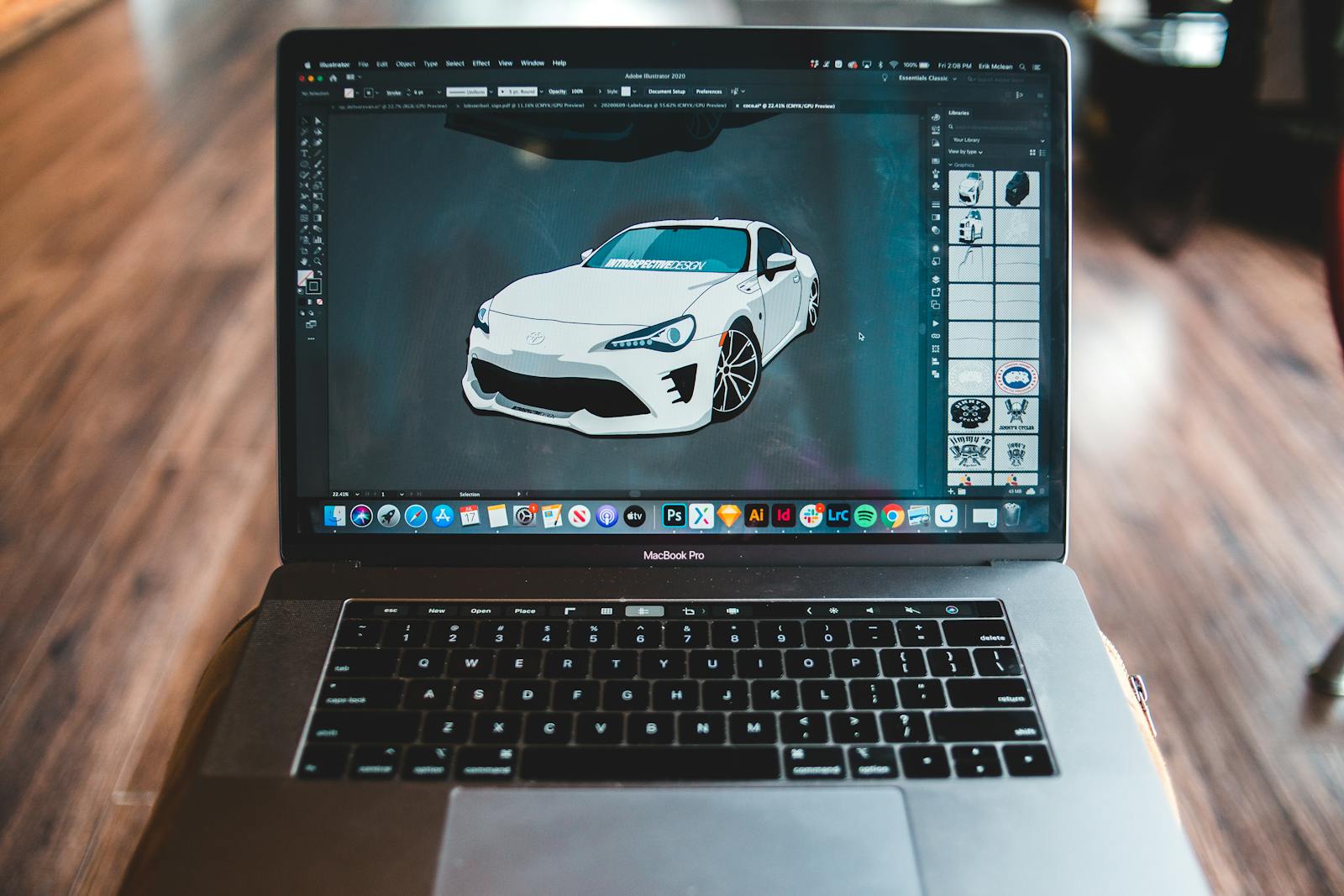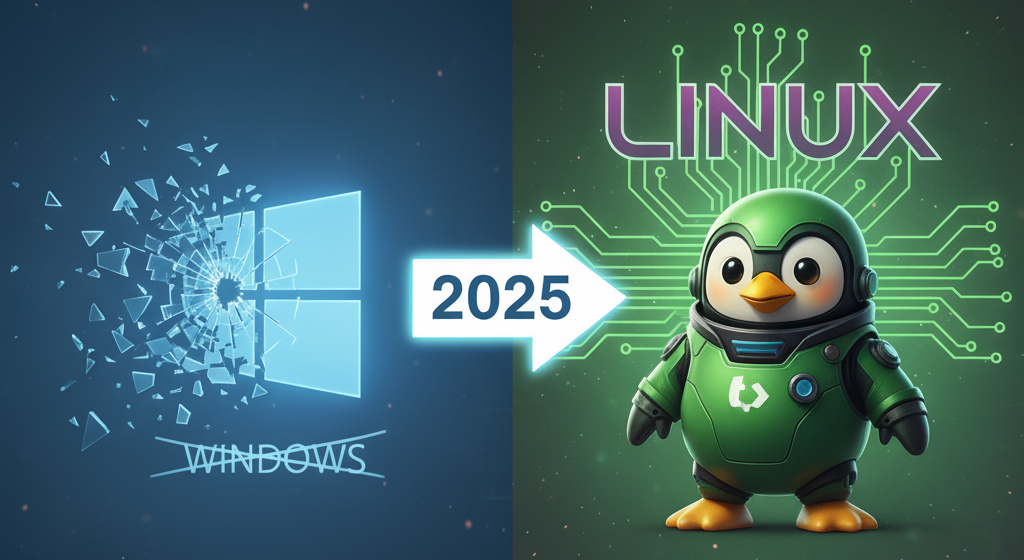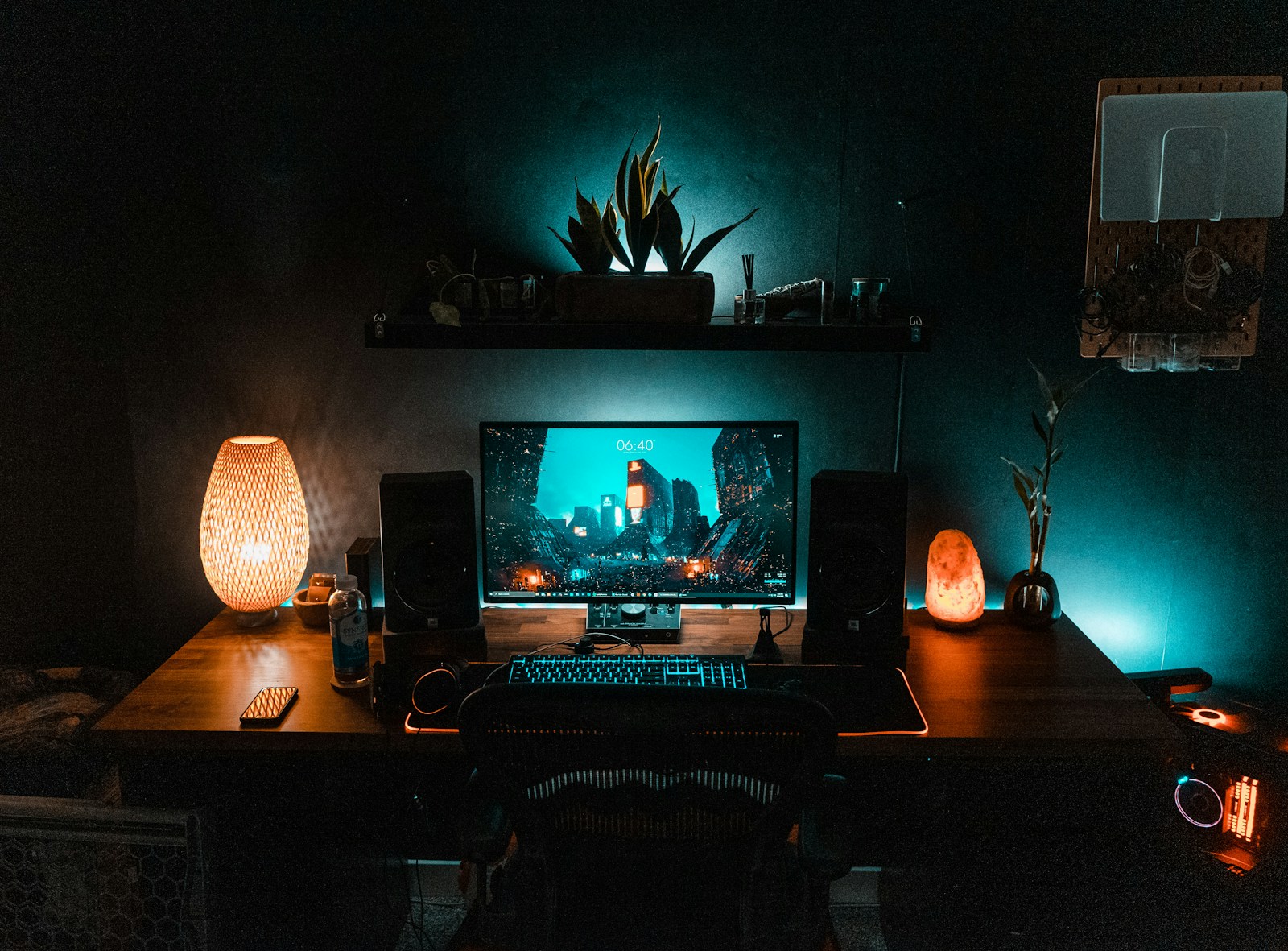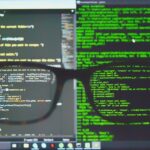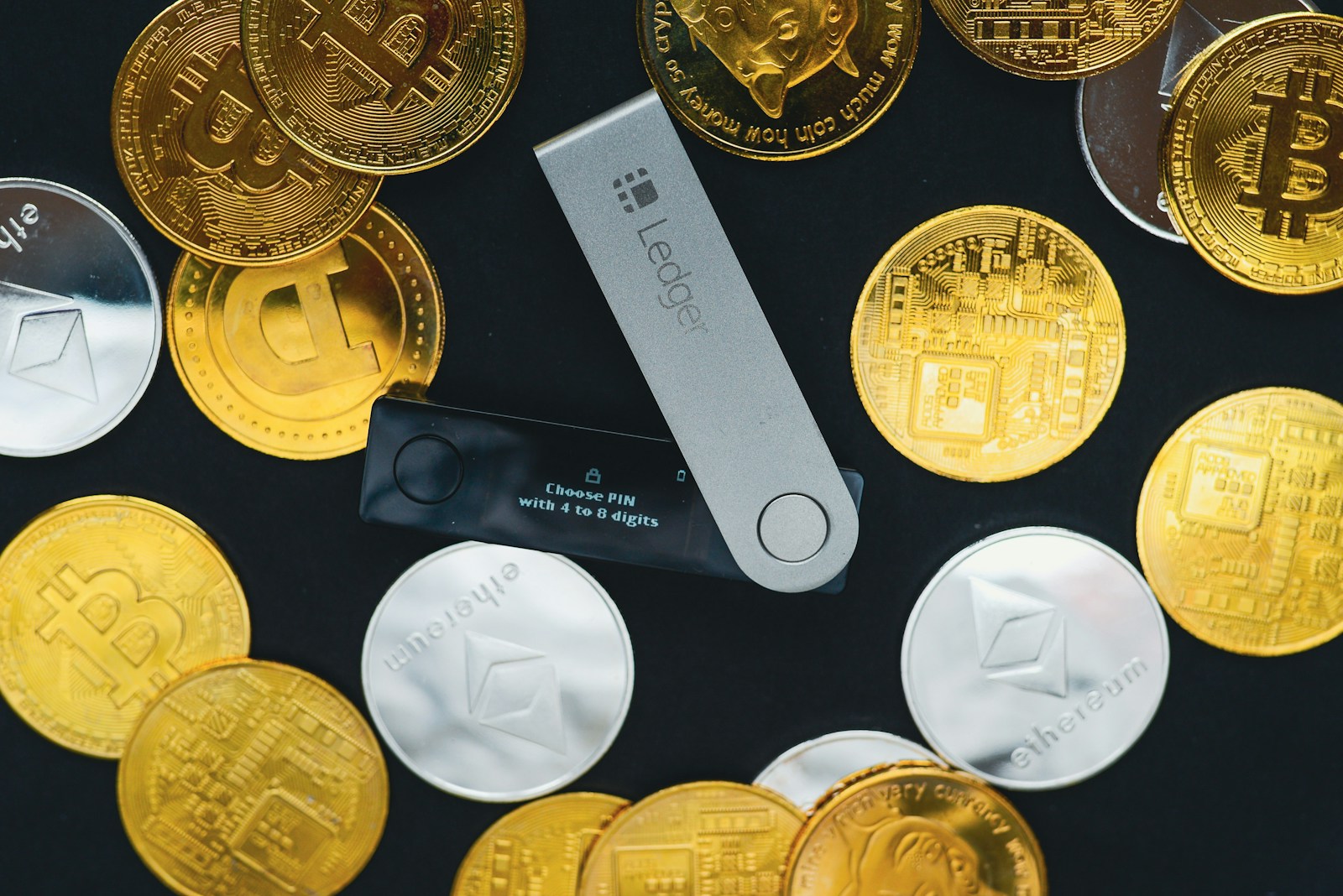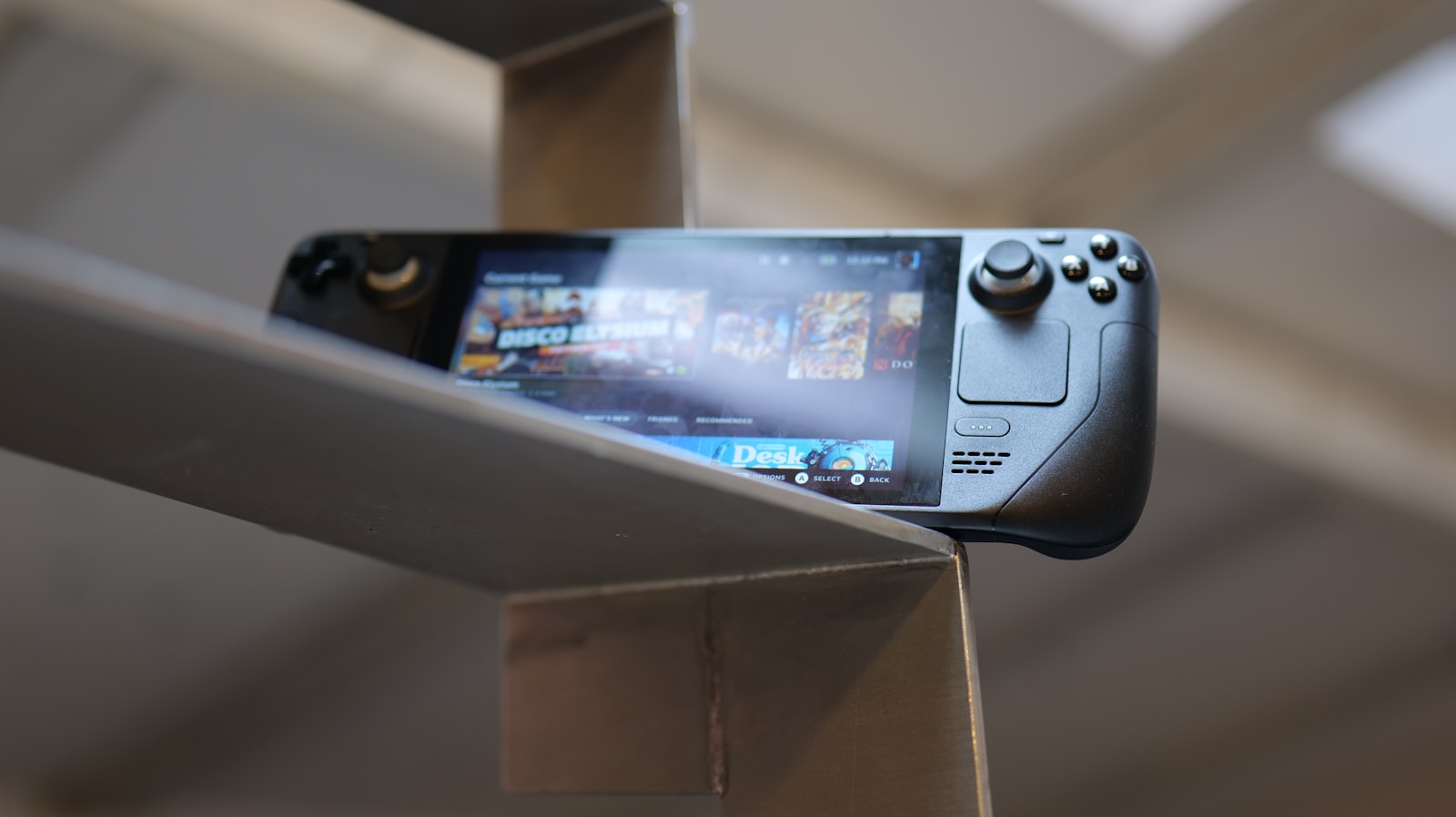Let’s be honest. You’re here because you face a classic dilemma. You love the power, control, and sheer elegance of a Linux desktop. You live in the terminal, you’ve customized your workflow to perfection, and the thought of going back to a more restrictive OS makes your skin crawl. But there’s that one, stubborn piece of software that keeps a tether tied to your old life: Adobe Photoshop.
The pain is real. Maybe you’re dual-booting, a clunky process that rips you out of your flow state every time you need to edit a photo. Perhaps you’re wrestling with a virtual machine, sacrificing performance and dealing with sluggish, frustrating interactions. You’ve told yourself, “I’ll just learn GIMP,” and while GIMP is a phenomenal tool, your muscle memory, your client’s .PSD files, and your years of accumulated professional workflow are all screaming for Photoshop.
What if I told you that you can have your cake and eat it, too? What if you could run a modern version of Adobe Photoshop, with solid performance and near-native integration, directly on your Linux desktop? Forget the outdated guides and the forum posts filled with dead ends. Today, we’re going to solve this problem for good. We’re going to install Photoshop on Linux, and we’re going to do it the right way.
Overview: Understanding the “Why” and “How”
For years, the community has begged Adobe to release a native Linux client. And for years, Adobe has remained silent, citing market share or development costs. While we can argue about their reasoning all day, the practical reality is that we’re on our own. But in the world of Linux, “on our own” means we have a community of brilliant developers building bridges.
The Problem We’re Solving: The Compatibility Gap
The fundamental issue is that Adobe compiles Photoshop for the Windows operating system. It speaks the “language” of Windows APIs, expects a Windows file structure, and relies on Windows libraries like DirectX for graphics acceleration. Your Linux system, with its POSIX-compliant kernel and different set of libraries, simply doesn’t understand what the Photoshop installer is saying. It’s like trying to play a Blu-ray disc in a VCR.
Historically, the solution has been Wine (a recursive acronym for “Wine Is Not an Emulator”). Wine is a remarkable piece of software that acts as a real-time translation layer. When Photoshop tries to make a Windows API call, Wine intercepts it and translates it into an equivalent call that the Linux kernel can understand. It’s not emulating a whole Windows PC; it’s translating, which is why it can be so performant. However, managing a raw Wine setup for a complex application like Photoshop can be a nightmare of conflicting libraries, broken dependencies, and obscure configuration files. It’s a path for masochists.
Our High-Level Solution: Managed Wine with Bottles
This is where our hero enters the scene: Bottles. If Wine is a cellar full of powerful but complex winemaking tools, Bottles is the master sommelier who handles all the complexity for you. Bottles creates isolated, self-contained environments (the “bottles”) for your Windows applications. Each bottle has its own set of libraries, its own registry, and its own configuration.
This approach is brilliant for a few reasons:
- Isolation: Your Photoshop installation won’t mess with any other Windows application you run, or more importantly, with your core Linux system. It’s neatly contained.
- Simplicity: Bottles provides a clean graphical interface to manage everything. You can install necessary dependencies (like specific C++ runtimes or fonts) with a single click.
- Versioning: You can easily swap out different versions of the compatibility layer (like GE-Proton, a popular fork of Wine) to find the one that works best for your specific version of Photoshop.
We will use Bottles to create a perfectly tailored environment for Photoshop, install the necessary dependencies, and then run the official Adobe installer within that environment. The result is a stable, manageable, and surprisingly performant way to get your work done on the OS you love.
What You’ll Need
Before we dive in, let’s gather our tools and make sure the workshop is clean. Getting this right from the start will save you a world of headaches. This isn’t just a list; it’s a battle plan.
A Modern Linux Distribution: This guide is tested on and tailored for recent versions of Fedora (38+) and Ubuntu (22.04+), but it should work on any modern distro that supports Flatpak. Make sure your system is fully updated. A simple
sudo dnf updateorsudo apt update && sudo apt upgradeis your first step.Flatpak: We’ll be installing Bottles via Flatpak. It’s a sandboxed packaging format that ensures we have the latest version of Bottles and all its dependencies without polluting our host system. If you don’t have it installed, it’s a one-line command. You can find instructions at the official Flatpak setup guide.
A Legitimate Adobe Photoshop Installer: This is non-negotiable. You need the offline installer files for a version of Photoshop. Through years of community testing, Photoshop CC 2021 (v22.x) is widely considered the gold standard for compatibility and stability on Wine. Newer versions (2022, 2023) can work but often have more graphical glitches, especially with features like Neural Filters. I strongly advise you to start with CC 2021. You will need the `Set-up.exe` and its accompanying files.
Sufficient System Resources: Don’t try to run this on a Raspberry Pi. Photoshop is a beast. I recommend the following minimums for a smooth experience:
- CPU: A modern 6-core/12-thread processor (e.g., AMD Ryzen 5 5600X, Intel Core i5-12600K or better).
- RAM: 16 GB is the absolute minimum. 32 GB is highly recommended if you work with large files and many layers.
- GPU: A modern, Vulkan-capable GPU with up-to-date drivers. For Nvidia, use the official proprietary drivers. For AMD, the open-source MESA drivers included with your distro are fantastic. At least 4 GB of VRAM is essential.
Patience and a Problem-Solving Mindset: You are running a complex piece of proprietary software on an operating system it was never designed for. There might be bumps in the road. This guide will get you 95% of the way there, but be prepared to think on your feet. That’s the Linux way, after all.
Step-by-Step Installation
Alright, theory is over. It’s time to get our hands dirty. Follow these steps precisely, and don’t skip ahead. Every detail matters.
Setting Up Your “Bottle” for Photoshop
First, we need to build the container—the clean room where Photoshop will live. This involves installing Bottles and configuring a new environment with all the right tools and libraries.
Install Bottles via Flatpak
Open your terminal. We’ll first add the Flathub repository if you don’t already have it (most distros do these days), and then install Bottles. It’s clean, simple, and reversible.
flatpak remote-add --if-not-exists flathub https://flathub.org/repo/flathub.flatpakrepo
flatpak install flathub com.usebottles.bottles
What this does: The first command ensures you have access to Flathub, the largest repository of Flatpak apps. The second command downloads and installs the latest stable version of Bottles. Because it’s a Flatpak, it pulls in all its own dependencies, so you don’t have to worry about conflicts with your system libraries. Once it’s done, you should find “Bottles” in your application menu.
Create a New, Purpose-Built Bottle
Launch Bottles. You’ll be greeted with a clean interface. Our first task is to create a new, isolated environment for Photoshop.
- Click the “+” button in the top-left corner to create a new bottle.
- Give your bottle a name. Something descriptive like “Adobe-Photoshop-2021” is perfect.
- Select the “Gaming” environment. This seems counter-intuitive, but the Gaming preset automatically includes a suite of performance-enhancing technologies like DXVK, VKD3D, Esync, and Fsync, which are crucial for the GPU-accelerated parts of Photoshop’s UI. It gives us a much better starting point than the standard “Application” environment.
- Click “Create“. Bottles will now go to work, downloading the necessary Wine components and setting up the virtual Windows C: drive structure. This might take a few minutes.
[Placeholder for screenshot of the Bottles “Create New Bottle” dialog with “Adobe-Photoshop-2021” and “Gaming” selected.]
Once it’s finished, you’ll see your new bottle in the main window. Think of this as a brand-new, minimalist Windows installation, ready to be customized.
Install Essential Dependencies
A fresh Windows environment is missing many of the runtime libraries that complex applications expect to be present. We need to install them manually. This is the most critical step for ensuring stability.
Select your new bottle, which will take you to its management panel. Go to the “Dependencies” tab. This is a list of common components that Bottles can install for you automatically. Here is the recipe for success. Find and install the following, one by one:
- Fonts: Install
allfonts. This is a comprehensive package that includes `corefonts` (Arial, Times New Roman, etc.) and many others. Garbled text and missing UI elements are almost always caused by missing fonts. This is your first and best line of defense. - Visual C++ Runtimes: Photoshop is built with Microsoft’s C++ compiler, so it needs the corresponding runtime libraries. Install the following in order:
vcrun2013,vcrun2019, andvcrun2022. This covers the libraries needed by both Photoshop itself and the Adobe Creative Cloud components it relies on. - .NET: While not always strictly necessary for older versions, it can solve strange bugs with plugins or extensions. Install
dotnet48. - Graphics Components: Install
gdiplus_win10. This is a core Windows graphics library responsible for rendering 2D graphics, text, and images. An updated version can fix a lot of UI rendering glitches.
For each one, just click the “Install” button and let Bottles do its thing. It will download the official installer from Microsoft and run it silently within the bottle. Your “Dependencies” section should now show these as installed.
[Placeholder for screenshot of the Bottles Dependencies tab showing all the required runtimes and fonts installed.]
Installing and Configuring Adobe Photoshop
With our environment perfectly prepared, it’s time for the main event. We’re now ready to run the actual Photoshop installer.
Run the Photoshop Installer
This is surprisingly straightforward. In your bottle’s main management panel, you’ll see a big blue “Run Executable…” button. Click it.
- A file browser will open. Navigate to the folder where you have your Photoshop CC 2021 installer files.
- Select the main `Set-up.exe` file and click “Run”.
Bottles will now launch the executable inside the sandboxed environment. You should see the familiar Adobe installer window appear. Proceed through the installation as you would on Windows. It may take a little longer than usual as Wine does its real-time translation work in the background.
Important Note: The Adobe installer will likely install some Creative Cloud background services. We’ll deal with those later. For now, just let the standard installation complete.
First Launch and Critical Configuration
Once the installation is finished, the Adobe installer may ask to launch the program. It’s better to close the installer and launch it from within Bottles. Go to the “Programs” tab in your bottle’s panel; you should see “Adobe Photoshop 2021” listed. Click the “Play” button next to it.
The first launch is the moment of truth. It might take a minute as Photoshop builds its caches. If it launches to the main workspace, congratulations! But we’re not done yet. We need to tweak some internal settings for better performance and stability.
- Inside Photoshop, go to Edit > Preferences > Performance.
- Graphics Processor Settings: This is the big one. By default, “Use Graphics Processor” should be checked. For many modern AMD and Nvidia cards, this works flawlessly thanks to DXVK. However, if you experience any visual artifacts, crashes, or strange UI behavior, your *first* troubleshooting step should be to come back here and uncheck this box. Running in CPU-only mode is slower, but it’s rock-solid stable. Test with it on first; disable it if you have problems.
- Click OK to save your preferences.
Taming Rogue Processes and Creating a Shortcut
Adobe loves to install background helper applications that run on startup. We don’t want these. In your bottle’s management panel, go to the “Task Manager” tab. If you see any Adobe processes running (like `Adobe CEF Helper` or `Creative Cloud`), you can safely kill them. They aren’t needed to run Photoshop itself.
Finally, let’s make Photoshop feel like a native app. In the “Programs” list, click the three-dot menu next to “Adobe Photoshop 2021” and select “Add to Application Menu“. This will create a `.desktop` file, and Photoshop will now appear in your regular Linux app launcher, just like Firefox or LibreOffice. You no longer need to open Bottles first to launch it!
Verifying Your Setup
The installation is complete, but the job isn’t done until we can prove it works. A simple “it launches” isn’t enough; we need to validate a real-world workflow.
End-to-End Validation
Let’s run a quick test that hits several of Photoshop’s core functionalities:
- Launch Photoshop from your system’s application menu.
- Open a complex, multi-layered `.PSD` file. If you don’t have one, grab a sample file from the web.
- Test the Type Tool. Select a few different fonts and make sure they render correctly.
- Try a computationally intensive filter. Go to Filter > Liquify. This filter relies heavily on GPU acceleration (if enabled) and is a great stress test. Try pushing and pulling some pixels around.
- Use the Brush Tool with varying opacity and flow. Ensure there isn’t significant lag.
- Finally, save your changes or export the file as a PNG or JPG to a location in your Linux home directory. The file browser within Photoshop should have access to your system’s files.
If you can complete all these steps without crashes or major visual glitches, you have a successful and viable installation. Your Linux desktop is now a professional-grade photo editing powerhouse.
[Placeholder for a screenshot showing Photoshop CC 2021 running on a Linux desktop (e.g., GNOME or KDE), with a multi-layered image open and the layers panel visible.]
Troubleshooting Common Issues
Even with a perfect setup, you might hit a snag. Here are some of the most common issues and how to crush them.
- Issue: Photoshop crashes on startup or shows a blank white window.
- Cause: This is almost always a graphics driver or GPU compatibility issue. Wine/DXVK is struggling to communicate with your video card.
Solution:- The easiest fix is to disable GPU acceleration. To do this without launching the app, go to your bottle’s settings, find the “Runner” section, and change the “DXVK” version to “Disabled”. This will force CPU rendering. If it launches, the problem is your GPU setup.
- Make sure your graphics drivers are fully up to date. For Nvidia, install the latest proprietary driver. For AMD, ensure your MESA stack is current.
- In Bottles, try changing the Wine runner. Go to Preferences and install “GE-Proton” (the latest version). Then go to your bottle’s settings and change the runner from “Soda” to “GE-Proton”. This can often fix compatibility issues.
- Issue: Text is garbled, or certain UI fonts are missing.
- Cause: You’re missing a critical Windows font.
Solution: Go back to the “Dependencies” tab for your bottle and ensure you have installed theallfontspackage. If you already have, try reinstalling it. This solves the problem 99% of the time. - Issue: A specific filter or plugin crashes the application.
- Cause: The plugin may have a unique dependency that we didn’t install, like a specific version of .NET or a rare DLL.
Solution: This is advanced territory. You’ll need to research the specific plugin to find its system requirements. Then, use the Dependencies tab in Bottles to try and install what’s missing. Be prepared for some trial and error here; not every third-party plugin will work. - Issue: Performance is sluggish, especially when panning or zooming.
- Cause: Your performance-enhancing layers (Esync, Fsync) may not be active.
Solution: In your bottle’s settings, under the “Runner” section, ensure both “Esync” and “Fsync” are toggled on. These require a kernel that supports them (most modern distros do), but they provide a significant performance uplift by reducing CPU overhead.
A Deeper Dive: Security, Performance, and Best Practices
Getting it running is one thing. Running it well and running it safely is another. As a systems architect, I can’t let you leave without understanding the implications of what we’ve just done.
Critical Security Considerations
Let’s be blunt: we are running a large, closed-source, network-aware application from a different operating system. This carries inherent risks. A vulnerability in Photoshop could, in theory, be exploited. However, our method using Flatpak and Bottles gives us a massive security advantage over a traditional Wine setup.
The Flatpak sandbox, by default, restricts Bottles’ access to your system. It can only see specific parts of your home directory. This means even if Photoshop were compromised, the exploit would be “jailed” within the bottle and the Flatpak sandbox, unable to easily access your personal SSH keys or system files. You can review and manage these permissions using a tool like Flatseal. This containment model is a huge win for security.
Performance Tuning & Optimization
The “Gaming” preset we chose gave us a great head start. Here’s what those settings actually mean:
- DXVK/VKD3D: These are the magic translation layers. Photoshop’s UI and GPU acceleration are built using Microsoft’s DirectX (versions 9, 10, 11, and 12). DXVK translates DirectX 9/10/11 calls to the modern, cross-platform Vulkan API, which your Linux GPU drivers understand. VKD3D does the same for DirectX 12. This is the core of our graphics performance.
- Esync/Fsync: These are kernel-level synchronization primitives. In layman’s terms, they are a much more efficient way for an application to wait for tasks to complete without burning CPU cycles. Having them enabled dramatically reduces CPU overhead and can lead to a much snappier, more responsive feel in the application.
- Runners: A “runner” is the compatibility layer itself. Bottles ships with its own (Soda), but also lets you easily install others like GE-Proton (GloriousEggroll’s custom build of Wine). GE-Proton often includes more recent patches and workarounds for specific applications, so it’s always worth trying if you run into trouble.
Your main performance levers are enabling/disabling GPU acceleration within Photoshop and, if you’re having issues, trying a different runner in the bottle’s settings.
Key Takeaways and Next Steps
We’ve done it. We’ve taken on a challenge that many in the Linux community consider a white whale and engineered a robust, practical solution. The key takeaway is that running Photoshop on Linux is no longer a dark art. With modern tools like Bottles and the continued evolution of Wine and Proton, it has become a genuinely viable option for professionals who refuse to compromise on their choice of operating system.
This process is a testament to the open-source philosophy: when a corporation won’t build a bridge, the community will engineer one themselves, and often make it stronger and more versatile than the original. It’s not a “fire-and-forget” installation like on Windows, and it requires a willingness to get your hands a little dirty. But the result is true freedom: your workflow, on your OS, on your terms.
Where to Go From Here
Now that you have Photoshop, don’t forget the incredible native tools at your disposal. This isn’t about replacing them; it’s about augmenting your toolkit.
- GIMP: Explore GIMP for its powerful scripting capabilities and its focus on raw image manipulation. It’s a different paradigm, but incredibly powerful once you learn it.
- Krita: If you do any form of digital painting or illustration, you owe it to yourself to try Krita. Its brush engine is arguably one of the best in the world, surpassing Photoshop in many respects for pure painting tasks.
Often, the ultimate workflow is a hybrid one. You might use Photoshop for its unparalleled Content-Aware Fill or its handling of specific client files, then jump over to Krita to paint in details with its superior brush engine. You now have the best of all worlds.
This journey can be tricky, and every system is a little different. If you have questions, found a different combination of dependencies that worked for you, or just want to share your success story, drop a comment below. Let’s help each other build the ultimate creative Linux desktop.

